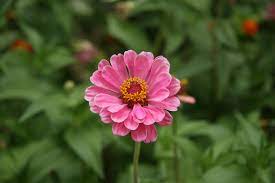**The Use of Chrysanthemums in Traditional Medicine in East Asian Countries**

Chrysanthemums, revered for their medicinal properties, have been integral to traditional medicine practices in East Asian countries for centuries. Let’s delve into the rich history and diverse applications of chrysanthemums in traditional healing across East Asia.
**1. China:**
In traditional Chinese medicine (TCM), chrysanthemums, known as “Ju Hua,” are prized for their cooling and detoxifying properties. Chrysanthemum tea, brewed from the dried flowers, is a popular remedy for alleviating heat-related conditions such as fever, sore throat, and headache. It is also believed to improve vision, relieve eye strain, and promote liver health. Chrysanthemum extracts are used in topical ointments and herbal formulations to treat skin inflammations, eczema, and acne.
**2. Japan:**
In Japanese traditional medicine, chrysanthemums, known as “Kiku,” are valued for their anti-inflammatory and antibacterial properties. Chrysanthemum infusions are used to soothe digestive disorders, calm the nerves, and promote relaxation. In Kampo, the traditional Japanese herbal medicine system, chrysanthemum extracts are incorporated into formulas to treat respiratory infections, allergies, and menstrual irregularities. Additionally, chrysanthemum poultices are applied externally to relieve muscle pain and joint stiffness.
**3. Korea:**
In Korean traditional medicine, chrysanthemums, known as “Gukhwa,” are esteemed for their aromatic and therapeutic qualities. Chrysanthemum tea is consumed to alleviate headaches, reduce inflammation, and improve circulation. Chrysanthemum extracts are also used in skincare formulations to brighten the complexion, reduce redness, and soothe sensitive skin. In Korean herbal medicine, chrysanthemum preparations are prescribed to treat respiratory conditions, eye infections, and digestive disorders.
**4. Vietnam:**
In Vietnamese traditional medicine, chrysanthemums, known as “Cúc hoa,” are cherished for their cooling and detoxifying effects. Chrysanthemum tea is a popular beverage consumed to relieve fever, clear heat, and detoxify the body. Chrysanthemum extracts are used in herbal remedies to treat respiratory ailments, including coughs, colds, and bronchitis. Additionally, chrysanthemum poultices are applied externally to alleviate skin irritations and promote wound healing.
**5. Taiwan:**
In Taiwanese traditional medicine, chrysanthemums, known as “Ju Hua,” are valued for their therapeutic properties. Chrysanthemum tea is widely consumed to reduce inflammation, lower blood pressure, and support liver function. Chrysanthemum extracts are used in herbal formulations to treat allergies, hay fever, and sinus congestion. Additionally, chrysanthemum baths are believed to promote relaxation, relieve muscle tension, and improve sleep quality.
**Conclusion:**
Chrysanthemums have played a significant role in traditional medicine practices across East Asian countries, offering a myriad of health benefits and therapeutic applications. As we continue to explore the ancient wisdom of traditional healing, chrysanthemums remain a symbol of resilience, vitality, and holistic well-being in the cultural landscape of East Asia.
**Part 2: The Utilization of Chrysanthemums in Traditional Medicine Across East Asian Countries**
The utilization of chrysanthemums in traditional medicine across East Asian countries reflects the deep-rooted cultural beliefs and healing practices that have been passed down through generations. Let’s explore further the diverse ways chrysanthemums have been employed in traditional healing in East Asia:
**1. China:**
In China, chrysanthemums are not only revered for their aesthetic beauty but also highly esteemed for their medicinal properties. Traditional Chinese Medicine (TCM) utilizes various parts of the chrysanthemum plant, including the flowers, leaves, and roots, in herbal formulations. Chrysanthemum tea, made from dried chrysanthemum flowers, is commonly consumed to alleviate symptoms of colds, headaches, and hypertension. Chrysanthemum extracts are also incorporated into topical remedies for treating skin conditions such as acne and eczema.
**2. Japan:**
Japanese traditional medicine incorporates chrysanthemums into healing practices to address a wide range of health concerns. Chrysanthemum tea, known as “Kiku-cha,” is valued for its calming effects on the nervous system and its ability to promote relaxation and reduce stress. In Kampo medicine, chrysanthemum extracts are often combined with other herbs to create formulas for treating respiratory ailments, allergies, and digestive disorders. Additionally, chrysanthemum essential oil is used in aromatherapy to uplift the mood and ease tension.
**3. Korea:**
In Korea, chrysanthemums have been utilized in traditional medicine for centuries, known as “Gukhwa” in Korean. Chrysanthemum tea is a popular remedy for soothing sore throats, relieving fever, and detoxifying the body. Korean herbal medicine incorporates chrysanthemum extracts into formulas to treat conditions such as indigestion, insomnia, and inflammation. Chrysanthemum poultices are also applied externally to alleviate joint pain and promote wound healing.
**4. Vietnam:**
In Vietnamese traditional medicine, chrysanthemums, known as “Cúc hoa,” are valued for their cooling properties and detoxifying effects. Chrysanthemum tea is commonly consumed to reduce body heat, alleviate headaches, and improve digestion. Chrysanthemum extracts are utilized in herbal remedies to treat respiratory infections, allergies, and skin disorders. Additionally, chrysanthemum essential oil is used in aromatherapy to promote relaxation and mental clarity.
**5. Taiwan:**
In Taiwan, chrysanthemums are utilized in traditional medicine to address a variety of health issues. Chrysanthemum tea is cherished for its ability to soothe the throat, clear heat, and detoxify the body. Taiwanese herbal medicine incorporates chrysanthemum extracts into formulations for treating eye conditions, promoting liver health, and reducing inflammation. Chrysanthemum baths are also popular for their calming and rejuvenating effects on the body and mind.
**Conclusion:**
Across East Asian countries, chrysanthemums hold a revered status in traditional medicine, offering a holistic approach to health and well-being. Whether consumed as tea, applied topically, or used in aromatherapy, chrysanthemums continue to play a vital role in preserving and promoting the health of individuals in the region. As we honor the traditions of the past, chrysanthemums remain a symbol of vitality, resilience, and the interconnectedness of nature and human health in East Asia.